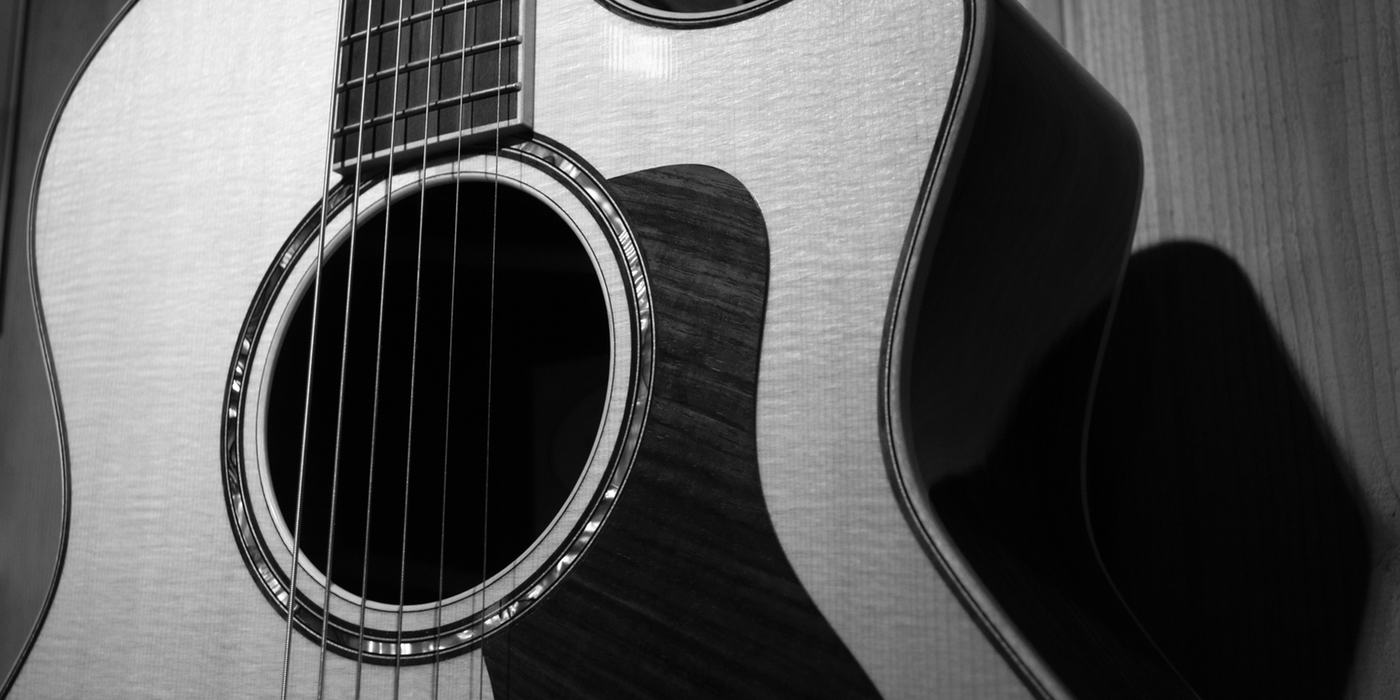Acoustic Guitar Timeline

The acoustic guitar timeline below focuses upon the history of the acoustic guitar specifically. It is not intended to be a timeline of the complete history of the guitar, but to point out specific highlights in acoustic guitar history. There is particular focus on the last 200 years or so. If you see any noticeable omissions or have any corrections, please let us know!
The guitar's history can actually be traced back a few thousand years, if we count early stringed instruments as loose ancestors. Instruments like the tanbur, oud, and lute are clear ancestors of the modern guitar and were common in the ancient world (Egypt and Mesopotamia, for example). The number of strings and shapes varied, but these instruments were obviously influential in the evolution of the guitar.
c. 1800 - 1850 - The guitar enjoys a larger audience regarding both performance as a solo instrument and compositions, including such noted performers and composers such as Sor and Carcassi.
c. 1833 - Martin Guitars founder CF Martin, a cabinetmaker, makes the first American-made guitar.
c. 1850 - Antonio Torres, arguably the most influential figure in the history of acoustic and classical guitar construction, introduces his revolutionary design which challenges accepted means of acoustic guitar construction. As a result of his alterations to the guitar's size and proportions as well as the bracing pattern, the guitar's basic tone and volume changed substantially, preparing its acceptance as a solo instrument.
c. 1850 - CF Martin popularizes the X-bracing system, a means of strengthening the guitar's top that is still in use by Martin and other companies to this day.
c. 1894 - Orville Gibson constructs acoustic guitars with arched, carved tops inspired by violin designs. These "archtop" guitars would set the stage for many guitars to come.
c. 1900 - Steel strings become available for the guitar, greatly expanding its capabilities as a solo instrument. The improved bracing system allows the guitar to support the increased tension.
1916 - Noted classical guitarist Andres Segovia, a self-taught virtuouso, performs at the most celebrated concert hall in Madrid, known as Ateneo. Among other things, this performance shows that the guitar has the capacity to perform as a solo instrument.
c. 1916 - Martin introduces the dreadnought-shaped guitar, which become not only the company's most popular model, but arguably the most common guitar shape for acoustic guitars.
c. 1966 - Charles Kaman, aerodynamic engineer, and his team develops the first Ovation Roundback guitar, a deviation from traditional designs with its noted synthetic roundback construction, offering increased sustain and projection.
c. 1978 - Takamine guitars introduces the Palathetic undersaddle pickup on many acoustic-electric models.
c. 1980 - Luthier Lloyd Baggs introduces the LB6 pickup, one of the first aftermarket acoustic guitar pickups to gain acclaim for its rich sound and ease of installation.
Acoustic Guitar Timeline - Final Words
I'll be the first to admit that there are many events I could add to the timeline. Is there a significant event that you think I should add to the above timeline? Submit your comments below and let us know!
Add Your Comments Here!
I'd love for you to be a contributor to SoMuchGuitar.com!
Just fill out the information below to add to this page. I'll be in touch about your submission soon!